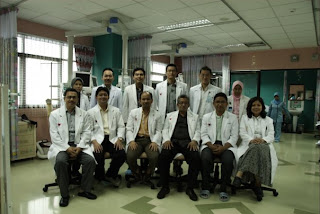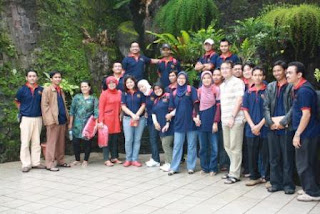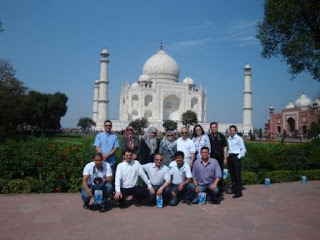Antegrade Cerebral Perfusion
 Antegrade perfusion of the brain through cannulae inserted in the innominate (or more distally in the right common carotid artery) and left common carotid artery provides the most physiologic and efficient perfusion of the brain. Perfusate temperature is usually set at 18°C and flow is set between 10 and 20 mL/kg/min or adjusted to maintain a pressure between 40 and 50 mm Hg in the right radial artery. Clinical results, especially regarding swift recovery of cerebral function, have been outstanding with this method of perfusion. The necessity to cannulate relatively small and often diseased arch arteries and the presence of additional cannulae in the operating field constitute the main drawbacks of the technique. Cannulation of the common carotid arteries can result in dissection of the arterial wall and embolism of atheromatous plaque material or air. Furthermore, the flow in the artery is dependent on proper positioning of the tip of the cannula within the vessel. For these reasons, many surgeons rely on a unilateral perfusion of the brain, with the sole cannulation and perfusion of the right subclavian artery. The right vertebral and right common carotid artery territories are perfused in an antegrade fashion. The blood reaches the left cerebral hemisphere through the circle of Willis and, to a lesser extent, through cervicofacial connections. It is, therefore, important that the left common carotid and left subclavian arteries be occluded to avoid a steal of blood down these arteries. Occlusion (usually with an inflatable balloon) of the descending aorta is also a useful maneuver to improve overall body perfusion. Effective somatic perfusion (including the abdominal organs, spinal cord, and lower limb musculature) has been documented with this maneuver.
Antegrade perfusion of the brain through cannulae inserted in the innominate (or more distally in the right common carotid artery) and left common carotid artery provides the most physiologic and efficient perfusion of the brain. Perfusate temperature is usually set at 18°C and flow is set between 10 and 20 mL/kg/min or adjusted to maintain a pressure between 40 and 50 mm Hg in the right radial artery. Clinical results, especially regarding swift recovery of cerebral function, have been outstanding with this method of perfusion. The necessity to cannulate relatively small and often diseased arch arteries and the presence of additional cannulae in the operating field constitute the main drawbacks of the technique. Cannulation of the common carotid arteries can result in dissection of the arterial wall and embolism of atheromatous plaque material or air. Furthermore, the flow in the artery is dependent on proper positioning of the tip of the cannula within the vessel. For these reasons, many surgeons rely on a unilateral perfusion of the brain, with the sole cannulation and perfusion of the right subclavian artery. The right vertebral and right common carotid artery territories are perfused in an antegrade fashion. The blood reaches the left cerebral hemisphere through the circle of Willis and, to a lesser extent, through cervicofacial connections. It is, therefore, important that the left common carotid and left subclavian arteries be occluded to avoid a steal of blood down these arteries. Occlusion (usually with an inflatable balloon) of the descending aorta is also a useful maneuver to improve overall body perfusion. Effective somatic perfusion (including the abdominal organs, spinal cord, and lower limb musculature) has been documented with this maneuver. The presence of an aberrant right subclavian artery (also called arteria lusoria) is obviously a contraindication to the use of this perfusion method. The aberrant origin of the artery is usually readily identified by computed tomography or magnetic resonance. The burst of blood from the descending aorta during the opening of the aortic arch should alert the surgeon to this anatomic variation, and prompt a direct cannulation of the ostium of the right and left common carotid arteries.
Sequential perfusion of the cerebral arteries provides additional safety to unilateral cerebral perfusion, and avoids cannulation of small or diseased arch arteries. The right subclavian artery remains perfused during the whole procedure. A vascular graft is immediately sewn on a common patch of aortic wall including all the arch vessels, or the second branch of a multiple-arm prosthesis is anastomosed to the left common carotid artery. Perfusion is then instituted through this additional graft and enhances, after a short period of time, cerebral perfusion.
The value of retrograde cerebral perfusion in protecting the human brain has still not been clearly elucidated. No animal model truly replicates the complex anatomy and physiology of the human brain, and none allows a fine neuropsychologic evaluation. Conflicting results and conclusions in clinical and experimental studies have, therefore, been reported. Accepted facts include a deep and homogenous cooling of the brain hemispheres (the cooling scalp effect) and the expulsion of solid particles or gaseous bubbles from the arch arteries. Controversies surround the possible nutritive value of retrograde perfusion. The nutritive value has been demonstrated in rabbits but not in dogs, pigs, or baboons. In humans, signs of cerebral perfusion and oxygen uptake have been documented, but the amount of perfusate providing cerebral nutrition is low, corresponding to about 5% of total retrograde flow. The blood delivered in the superior vena cava flows preferentially in the low-pressure inferior vena cava, via the azygos system, the perivertebral venous plexus, and the thoracic wall veins. Even within the brain, the distribution of retrograde flow is uneven, with a preferential distribution in the sagittal sinus and hemispheric veins. The large steal of blood to the inferior venous territory is corroborated by the clinical finding of an extremely small proportion of perfused blood flowing out of the arch arteries. Occlusion of the inferior vena cava to decrease the pressure gradient between the two venous territories effectively reduces the amount of stolen blood, but increases the sequestration of fluid in the interstitial tissue. Interstitial edema is another potential problem of retrograde perfusion, which can lead to cerebral edema and hypertension, particularly when the perfusion pressure exceeds 25 mm Hg. Finally, the finding that the human jugular system may contain competent valves casts definitive doubts regarding the reliability of retrograde cerebral perfusion.
Clinical series, however, have reported encouraging results. A reduction in both mortality and incidence of neurologic damage has been regularly documented with the adjunctive use of retrograde cerebral perfusion to classical hypothermia. Some studies confirmed the limited capacity of retrograde perfusion to sustain cerebral metabolism, and stressed the fact that the occurrence of neurologic damage was only delayed. Indeed, the risk rises sharply after 60 minutes of deep hypothermic circulatory arrest, perhaps at the extinction of intracellular energy substrates. If most surgeons acknowledge the capacity of retrograde cerebral perfusion to prolong the period of safe circulatory arrest, they consider the method a valuable but not an alternative adjunct to conventional methods when long periods of circulatory arrest are contemplated.
Probably the safest approach to a patient requiring a long period of circulatory arrest resides in the integration of complementary methods of perfusion and monitoring. Retrograde perfusion of the aorta through the femoral artery should be avoided in the presence of a thoracic aortic aneurysm in order to reduce the risk of particulate dislodgment with embolization in the brain and myocardium. Antegrade perfusion of the aorta is performed with cannulation of the ascending aorta or right subclavian artery. The body is cooled to 18°C. Electroencephalogram and venous jugular saturation are monitored to ensure adequate reduction of cerebral metabolism. Circulatory arrest is established only after electrocerebral silence is obtained and jugular venous saturation is superior to 95%. During the 10 to 20 minutes preceding circulatory arrest, the temperature of the perfusate can be lowered to 13°C to further reduce brain temperature and metabolism. The arch arteries are connected to a graft (either with the use of a patch of aortic wall or separately), and antegrade perfusion of the brain is resumed before more extensive resection and repair of the aorta is performed. When the risk of particle embolization to the brain is substantial (old age, severe atherosclerosis of the aorta, arch aneurysm with thrombotic material), a short period of retrograde cerebral perfusion can be performed to wash out the arch arteries before antegrade perfusion is definitively reestablished.



















